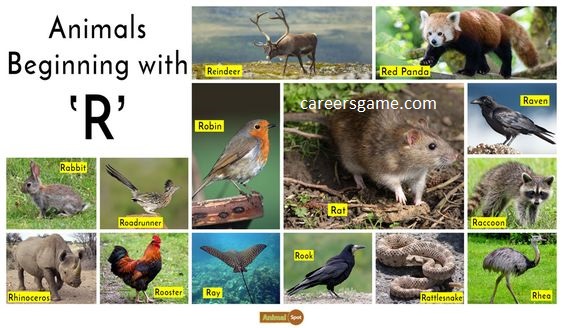The animal kingdom is vast and diverse, filled with fascinating creatures that inhabit various ecosystems around the world. Some of these animals have names that begin with the letter “R.” In this article, we will explore several such animals, providing insights into their characteristics, habitats, and unique behaviors. From the rainforest to the savannah, these creatures showcase the rich biodiversity of our planet.
1. Red Panda
The red panda, native to the eastern Himalayas and southwestern China, is a small mammal known for its distinctive reddish-brown fur and bushy tail. Unlike the giant panda, which is a bear, the red panda is more closely related to raccoons and weasels. They are primarily arboreal, spending much of their time in trees, where they forage for bamboo, fruits, and small insects. Red pandas are solitary animals and are primarily active at dawn and dusk, making them crepuscular.
Habitat and Conservation
Red pandas inhabit temperate forests with dense understories of bamboo. Due to habitat loss and poaching, they are classified as vulnerable by the International Union for Conservation of Nature (IUCN). Conservation efforts focus on protecting their natural habitats and reducing human-wildlife conflict.
2. Rhinoceros
Rhinoceroses are large, thick-skinned mammals native to Africa and South Asia. Known for their impressive size and iconic horns, rhinoceroses are divided into five species: white, black, Indian, Javan, and Sumatran. These herbivores primarily graze on grasses and browse on bushes and trees, depending on the species.
Threats and Conservation
Rhinoceroses face significant threats from poaching for their horns, which are highly valued in traditional medicine and as status symbols. Conservation efforts have led to the establishment of protected areas and anti-poaching initiatives, but their populations remain critically endangered, particularly the Javan and Sumatran rhinos.
3. Raccoon
Raccoons are medium-sized mammals native to North America, recognizable by their black “mask” of fur around their eyes and ringed tails. Highly adaptable, raccoons thrive in both urban and rural environments. They are omnivorous scavengers, feeding on fruits, nuts, insects, and human food. Their dexterous front paws allow them to manipulate objects and open containers, making them notorious for rummaging through garbage bins.
Behavior and Adaptability
Raccoons are primarily nocturnal and are known for their intelligence and problem-solving abilities. They are social animals, often living in family groups. Despite being wild animals, their adaptability to urban settings has made them a common sight in many cities.
4. Rabbit
Rabbits are small, herbivorous mammals found in various habitats worldwide, including meadows, forests, and grasslands. With long ears, powerful hind legs, and a short fluffy tail, rabbits are well adapted for life on the run. They are known for their incredible speed and agility, which help them evade predators.
Social Structure and Reproduction
Rabbits are social creatures that often live in colonies. They communicate through a variety of vocalizations and body language. Female rabbits, or does, can produce several litters each year, with each litter containing multiple kits. This high reproductive rate contributes to their widespread presence in ecosystems.
5. Rattlesnake
Rattlesnakes are venomous snakes found primarily in the Americas, easily identified by the distinctive rattle at the end of their tails. They belong to the pit viper family, possessing heat-sensing pits that help them locate warm-blooded prey. Rattlesnakes primarily feed on small mammals, birds, and sometimes other reptiles.
Habitat and Behavior
These snakes inhabit diverse environments, including deserts, forests, and grasslands. Rattlesnakes are solitary creatures and are primarily active during the warmer months. Their venom is used to immobilize prey, and while it poses a danger to humans, bites are rare and often occur when the snake is accidentally provoked.
6. Red Fox
The red fox is a small to medium-sized canid found across the Northern Hemisphere. Recognizable by its bushy tail and reddish coat, the red fox is a highly adaptable species, thriving in various habitats, including forests, grasslands, and urban areas. They are omnivorous and hunt small mammals, birds, and fruits.
Social Structure and Communication
Red foxes are known for their intelligence and cunning behavior. They are social animals, often living in family groups. Their vocalizations, including barks, howls, and screams, serve as communication methods with other foxes.
Conclusion
The animal kingdom is replete with fascinating creatures, and those that start with the letter “R” are no exception. From the charming red panda to the formidable rhinoceros, each animal plays a unique role in its ecosystem and faces distinct challenges in the modern world. Understanding these creatures not only enhances our appreciation of biodiversity but also highlights the importance of conservation efforts to protect their habitats and ensure their survival.
As we explore the various species that inhabit our planet, let us remember the interconnectedness of all living beings and the responsibility we share in preserving the natural world for future generations. Whether through supporting conservation initiatives or simply spreading awareness, each action contributes to a brighter future for these remarkable animals.



